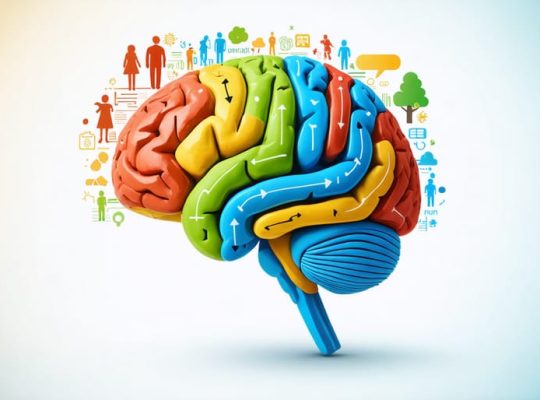Take a few deep breaths, focusing on the sensation of air moving in and out of your lungs. This simple practice can help calm anxiety in students by shifting attention to the present moment. Practice mindful eating by savoring each bite, noticing the flavors, textures, and aromas of your food. This can reduce stress and foster a healthier relationship with meals. Incorporate a brief body scan meditation into your daily routine, systematically bringing awareness to each part of your body and releasing tension. By addressing the stigma around mental health and prioritizing self-care, these mindfulness techniques can significantly improve student well-being and academic performance.
Mindful Breathing
Mindful breathing is a simple yet powerful technique that can help students reduce stress, improve focus, and cultivate a sense of inner calm. By bringing awareness to the breath, students can anchor themselves in the present moment and find relief from anxious thoughts or overwhelming emotions.
To practice mindful breathing, find a comfortable seated position and gently close your eyes. Begin by taking a deep breath in through your nose, filling your lungs from the bottom to the top. Feel your belly expand as you inhale. Pause briefly at the top of your inhale, then slowly exhale through your mouth, letting your belly fall as you release the breath. Pause again at the bottom of your exhale before beginning your next inhale.
As you continue breathing, notice the sensations in your body. Feel the cool air entering your nostrils, the gentle rise and fall of your chest, and the subtle movements of your belly. If your mind begins to wander, gently redirect your attention back to your breath without judgment.
You can practice mindful breathing for just a few minutes at a time, gradually increasing the duration as you become more comfortable with the technique. This simple exercise can be done anywhere, whether you’re sitting at your desk, waiting in line, or feeling overwhelmed before a test.
By incorporating mindful breathing into their daily routine, students can cultivate a greater sense of self-awareness, resilience, and emotional balance. This foundational mindfulness practice can serve as a gateway to deeper exploration of mindfulness techniques and their benefits for overall well-being.

Body Scan Meditation
The body scan is a powerful mindfulness meditation that helps you tune into your body’s physical sensations, promoting relaxation and stress relief. To practice, find a comfortable position sitting or lying down. Close your eyes and take a few deep breaths, noticing the rising and falling of your belly.
Begin by bringing your attention to your toes. Notice any sensations – tingling, warmth, pressure, or tightness. If you don’t feel anything, simply notice the absence of sensation. Slowly move your awareness up to your feet, ankles, calves, knees, and thighs. Pause at each body part, observing without judgment.
Continue scanning up through your hips, belly, lower back, chest, and upper back. Notice your heartbeat and the gentle rhythm of your breath. Move your attention to your fingers, hands, wrists, forearms, elbows, upper arms, and shoulders. Observe any areas of tension and consciously relax those muscles.
Finally, bring awareness to your neck, jaw, face, ears, and head. Notice your facial expression and let it soften. Imagine your whole body absorbing and radiating a sense of calm. Practice mindfulness for PTSD or whenever you need a moment of peace.
Regular body scans train you to be more attuned to your body’s signals, helping you recognize and release stress and tension. With practice, you’ll cultivate a deeper sense of mind-body connection and inner tranquility – invaluable tools for thriving in your studies and beyond.

Mindful Movement
Mindful movement, such as yoga or tai chi, can be a powerful tool for students to reduce stress, improve concentration, and cultivate overall well-being. By focusing on the breath and the sensations in the body, these practices help bring awareness to the present moment, allowing students to release tension and quiet the mind. Even a few minutes of mindful movement each day can have significant benefits.
Simple yoga poses like Cat-Cow, Child’s Pose, and Seated Forward Bend can help students stretch, release tension, and calm the nervous system. These poses can be done right at a desk or during a study break. Tai chi, with its slow, flowing movements, is another accessible option for students. Practices like “Parting the Wild Horse’s Mane” or “Wave Hands Like Clouds” can promote relaxation and mental clarity.
Mindful movement doesn’t have to be a formal practice. Encouraging students to take mindful walks, paying attention to each step and the surrounding environment, can provide a much-needed break from screens and mental chatter. Even simple stretches, like shoulder rolls or neck rotations, when done with full attention, can be a form of mindful movement.
The key is to approach these practices with curiosity and without judgment. Remind students that there’s no perfect way to do these movements – what matters is showing up and being present. By incorporating mindful movement into their daily routines, students can develop a valuable tool for managing stress, enhancing focus, and supporting their overall well-being.
Gratitude Practice
Practicing gratitude is a powerful way for students to support their mental health and well-being. By focusing on the positive aspects of life, even during challenging times, students can cultivate a more optimistic outlook and build resilience. One simple way to incorporate gratitude into daily life is by keeping a gratitude journal. Encourage students to set aside a few minutes each day to write down three things they are thankful for, no matter how small. This could be a supportive friend, a delicious meal, or a beautiful sunset. Over time, this practice can rewire the brain to naturally seek out the good in every situation.
Another way to foster gratitude is by sharing appreciations with others. Suggest that students take a moment to express their gratitude to a classmate, teacher, or family member who has made a positive impact on their life. This could be through a heartfelt conversation, a handwritten note, or even a small gift. By actively acknowledging and appreciating the kindness of others, students can strengthen their relationships and create a more supportive environment.
It’s important to note that practicing gratitude is not about denying or minimizing the challenges students face. Rather, it’s about finding a balance and maintaining perspective. Encourage students to be gentle with themselves and recognize that it’s okay to have difficult feelings alongside gratitude. By nurturing a grateful mindset, students can build a strong foundation for their mental health, just as proper nutrition and mental health go hand in hand.

Mindful Listening
Mindful listening is a powerful skill that can enhance communication, deepen relationships, and foster understanding. For students, practicing mindful listening in the classroom and in conversations with peers and teachers can lead to improved focus, retention of information, and stronger connections with others.
To practice mindful listening, start by giving your full attention to the person speaking. Put aside distractions, such as phones or wandering thoughts, and focus on the speaker’s words, tone, and body language. Avoid interrupting or mentally preparing your response while the other person is talking. Instead, aim to understand their perspective and feelings.
Show that you are actively listening by maintaining eye contact, nodding, and using brief verbal acknowledgments like “mhm” or “I see.” When it’s your turn to respond, paraphrase what you heard to ensure you understood correctly and ask clarifying questions if needed. This demonstrates that you value the speaker’s thoughts and feelings.
Mindful listening also involves being open-minded and non-judgmental. Set aside preconceptions and listen with curiosity and empathy. Try to understand the speaker’s point of view, even if it differs from your own. By creating a safe and supportive environment for sharing, you encourage more honest and meaningful conversations.
Incorporating mindful listening into daily interactions can lead to more effective collaboration, deeper learning, and stronger relationships with classmates and teachers. By modeling mindful listening, students can also contribute to a more compassionate and understanding classroom environment, promoting better communication and emotional well-being for all.
Nature Connection
Spending time in nature can be a powerful way for students to reduce stress and cultivate mindfulness. Research has shown that being in natural environments can lower cortisol levels, the hormone associated with stress, and improve overall well-being. Encourage students to take mindful walks in parks, gardens, or forests, focusing on the sensations of each step and the beauty surrounding them. They can also engage in grounding exercises, such as sitting quietly under a tree and noticing the textures, sounds, and smells of the outdoors. Even in urban settings, students can connect with nature by tending to a small garden or houseplants, observing the growth and changes over time. Incorporating outdoor mindfulness practices into a student’s routine, such as eating lunch in a park or studying in a quiet green space, can provide much-needed breaks from the stresses of academic life. By mindfully immersing themselves in nature, students can cultivate a deeper sense of presence, peace, and resilience in the face of challenges.
Conclusion
In conclusion, mindfulness is a powerful tool for students to cultivate inner peace, improve focus, and enhance overall well-being. By incorporating simple techniques like deep breathing, body scans, mindful movement, and gratitude journaling into their daily routines, students can effectively manage stress and anxiety. Remember, the key is to start small and be consistent. Experiment with different techniques to find what resonates with you personally. Even just a few minutes of mindfulness practice each day can make a significant difference in your mental health and academic performance. Embrace the journey of self-discovery and self-care, and watch as your mindfulness practice transforms your student life for the better.







